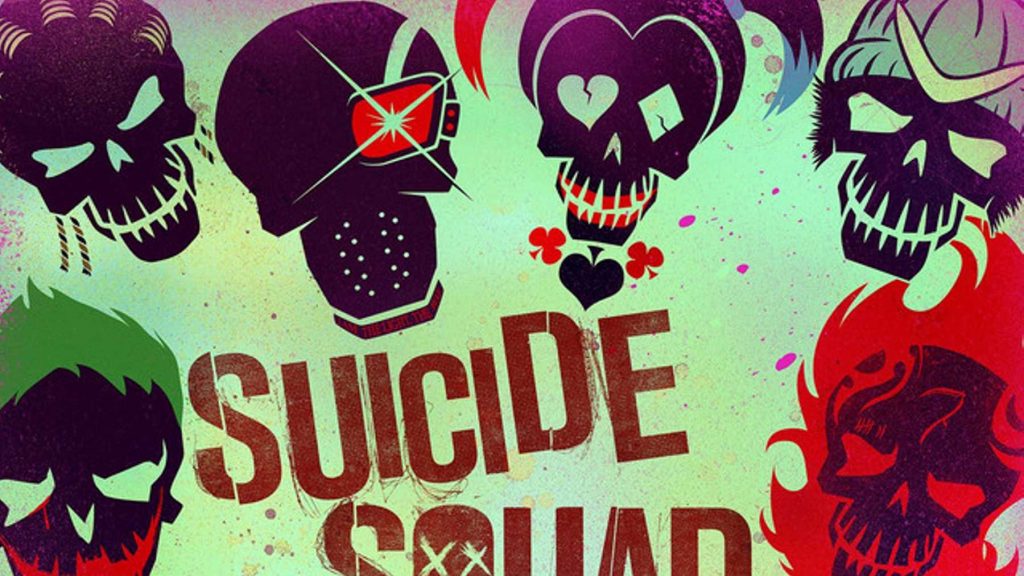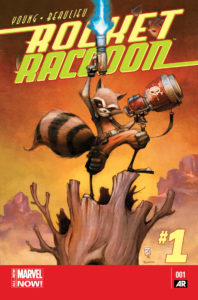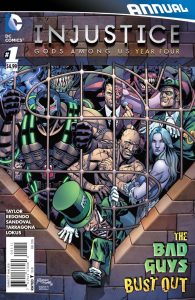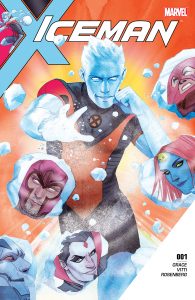
Like a bag of rainbow-colored candy that turns out to be mostly black jellybeans, Suicide Squad is a frustratingly mixed experience. Not simply because of the bad aftertaste, but rather because it gave you a flavour for the good stuff to begin with. The grenade-popping, neon splattered fun promised in trailers gets lost in a plot that swiftly hits the skids and creates a pile-up of problems. But it’s still a lot of fun, provided you apply some of your own imagination to it. There’s enough good material- the premise, the cast, the neon and grime aesthetic—to picture a great film comprised of its key ingredients.
It’s got ninety-nine problems but a pitch ain’t one: When shady government official Amanda Waller (Viola Davis, excellent) puts together a team of the ‘worst of the worst’ super-baddies she has on lockdown, she introduces a premise full of possibility. These are people she can incentivize with time off their lengthy prison sentences and keep in line with the threat of death (a tiny bomb implanted at the back of the neck). They can do the last-resort jobs while remaining conveniently disposable. Anti-heroes front and center has been a recipe for success from ‘Seven Samurai’ to ‘Guardians of the Galaxy’ and ‘Deadpool’. How do you screw that up?
Well, you cram in about fifty-two extraneous characters (just a random number that popped into my head), waste your greatest villain and throw in lousy one to boot (and make Batman even more of a dunderheaded jerk than he was in that last movie).
Let’s see if we can fix it with a big ‘What if?’
Problem: The team is overcrowded and it leaves everyone short-changed. As much as I like the idea of seeing Killer Croc or Katana in a live-action film, they have no business being here except to add variety to a resulting line of action figures. They steal valuable screen-time from rounder characters like Harley Quinn and Deadshot, who make the most of what they’re given but clearly deserve more.
Fix-it: The team should be made up of four or five characters, including Will Smith’s (likeable) Deadshot, Margot Robbie’s (wonderful) Harley Quinn and Jared Leto’s (promising) Joker. They’re no heroes to be sure, but if you’ve seen ‘Guardians of the Galaxy’ you know that a bunch of screw-ups can make for a great team given the right circumstances. The Joker should be a late addition, after Waller is forced to make an example of one of the other members (a character we’ve spent time with, so it shocks when it happens. And no, those two minutes with Slipknot don’t count).
Let’s take it a step further and make Harley and the Joker estranged at the outset, forced into working together to Harley’s initial dismay (their toxic addiction to one another, so well-portrayed in their few scenes together, stands out as the film’s major accomplishment). True to character, Harley’s arc should revolve around her struggle for identity. Is she the powerful, bat-swinging, not-as-crazy-as-you-think woman who’d do anything for her friends or the subjugated abuse victim she allows herself to be in the grips of a bad romance she can’t escape?
The Joker should prove to be a valuable team member, saving their bacon on more than one occasion. It leads Harley to believe that she may have been wrong about him; that maybe they even have a shot at a life together. Like so many strong women who should know better, Harley wants badly to believe that her man can change. In the end, Harley should be forced to choose between her pals and her Puddin’… and she shouldn’t make a very smart choice.
Problem: In a story ostensibly about villains, its most notable letdown is the lack of a strong one. The Enchantress (Cara Delevigne, dressed as Swamp Thing) is an ancient witch with some vague notions about taking over the world or possibly ending it (I honestly can’t remember) because humanity have chosen to worship machines, or something to that effect. She occupies the body of a young archaeologist who also happens to be the girlfriend of the Squad’s guard dog, a poorly drawn Rick Flagg. She’s on the team for about five seconds before going on a supernatural destruction spree. It’s hard to swallow that a film featuring possibly the greatest comic book villain of all time should suffer this particular flaw.
Fix it: This brings us back to Suicide Squad’s most criminally underused character, the Joker. He could have stolen the show if he’d been given half a chance. He should have been part of the Squad, only to betray them all and reveal himself as the real Big Bad. It would have been the perfect way to introduce him to DC’s cinematic universe, to play on his quintessence as the wild card in any scenario, and it would have given Harley’s story real conflict.
Ever seen ‘The Usual Suspects’? If you haven’t, do so now. Finding out the identity of mysterious crime boss Keyser Soze is one of the most satisfying movie-going experiences you’ll ever have. Here’s an idea: In Suicide Squad, the Joker has a business associate (portrayed by Common) called Monster T. Imagine that Monster T, with no hint of ties to the Joker, had been built up as the villain, a powerful mobster who is always one step ahead of Waller and the Squad.
In a final showdown, the Squad is laid low and all seems lost… until Harley has a perfect shot at the ‘boss’ himself. Just as she’s about to take it, who should step forward to reclaim his throne but her beloved Mistah J. Monster T bends the knee accordingly and Harley is knocked for six but still positioned for that perfect shot, no longer at Monster T but at the Joker. And, of course, she doesn’t take it.
Margot Robbie’s Harley is fantastic. If there is one performance in this film to write home about, it’s hers. But this is still just the beginning of Harley’s story in the DC extended universe, and if they want to take time to develop her story, she’s not yet ready to break away from her role as the Joker’s troubled girlfriend.
Problem: Cameos from other superheroes add nothing to this film. In fact they detract, and this need not be the case. ‘Deadpool’, for example, alludes to its part in a bigger cinematic universe in only in the most offhand way, and it benefits greatly from standing on its own.
Batman does not come across well in this film. He confronts an assassin in the presence of an eleven-year-old child. He punches a helpless woman in the face and performs weird CPR on her. Worst of all, the World’s Greatest Detective once again has to rely on others for apparently accessible information. Is Batman kind of an idiot? And the Flash is there and gone in…well, a flash.
Fix-it: No cameos. A sneaky wink and nod to the extended universe is more than enough to tie this film to subsequent entries. But if you really needed to involve Batman, for the love of God face him off against the Joker.
This film should have been given an R-rating. ‘Deadpool’ proved it can be done and done well. If Warner Brothers had taken notes from that scrappy little film, I might be writing a very different critique. Most of my conversations in the wake of ‘Suicide Squad’ have pertained to what kind of film it might have been, done differently. For me, it’s a fun daydream. For the committee of studio execs who supposedly tore David Ayer’s script to confetti, it’s the real deal: A knee-jerk reaction to the success of ‘Deadpool’ and the colossal flop of ‘Batman v Superman’. For better or worse, the success and failure of those films may have greatly altered the version ‘Suicide Squad’ we saw onscreen. Perhaps there will be a Director’s Cut that clears things up. What if it’s great?
Should it ever be released, I’ll be first in line to find out.


